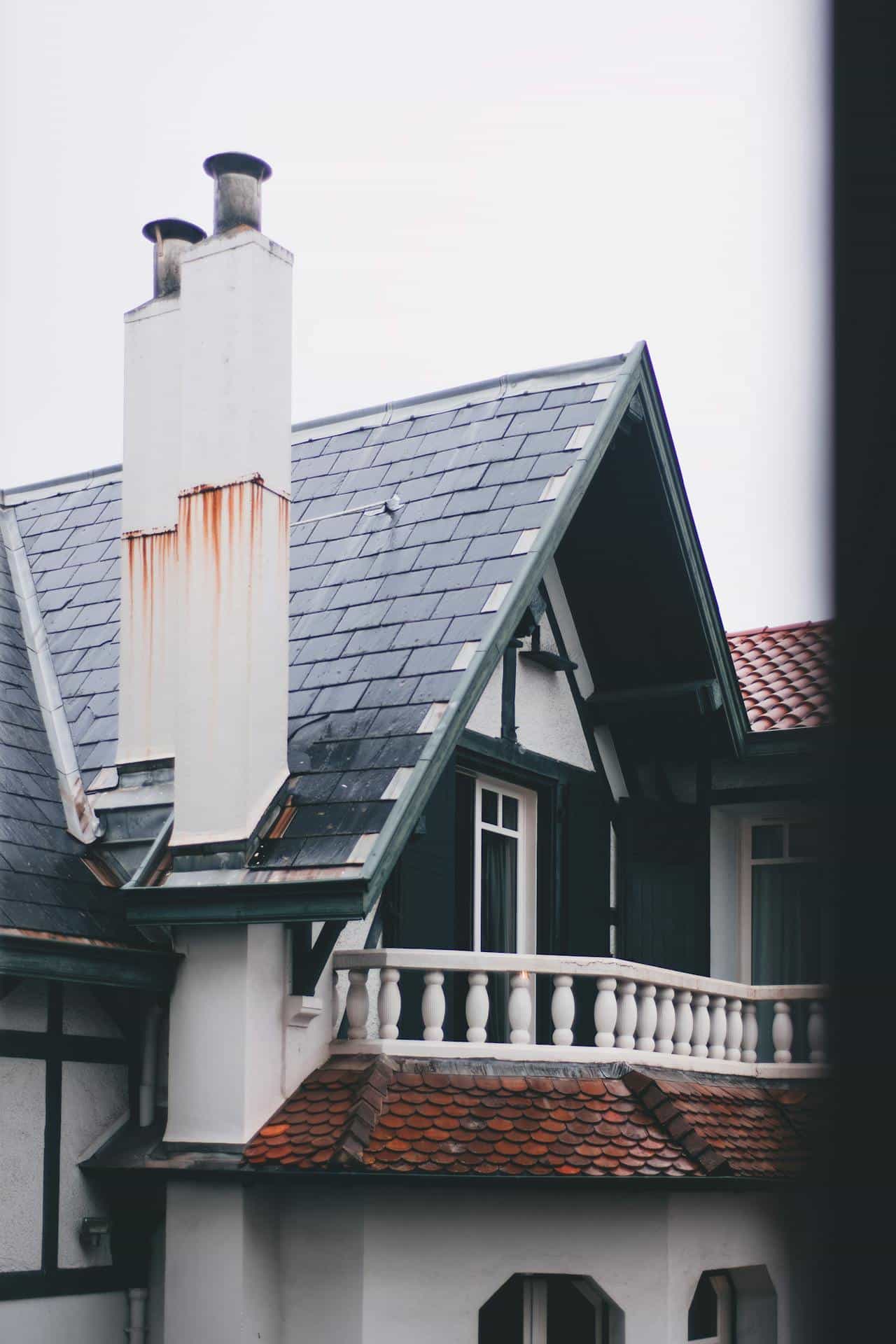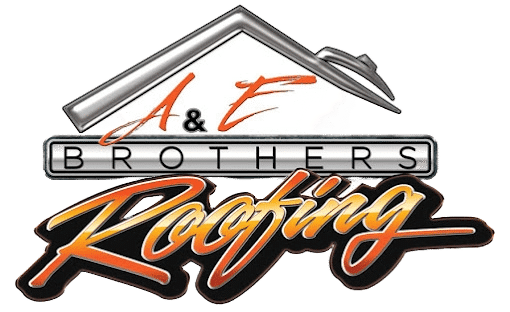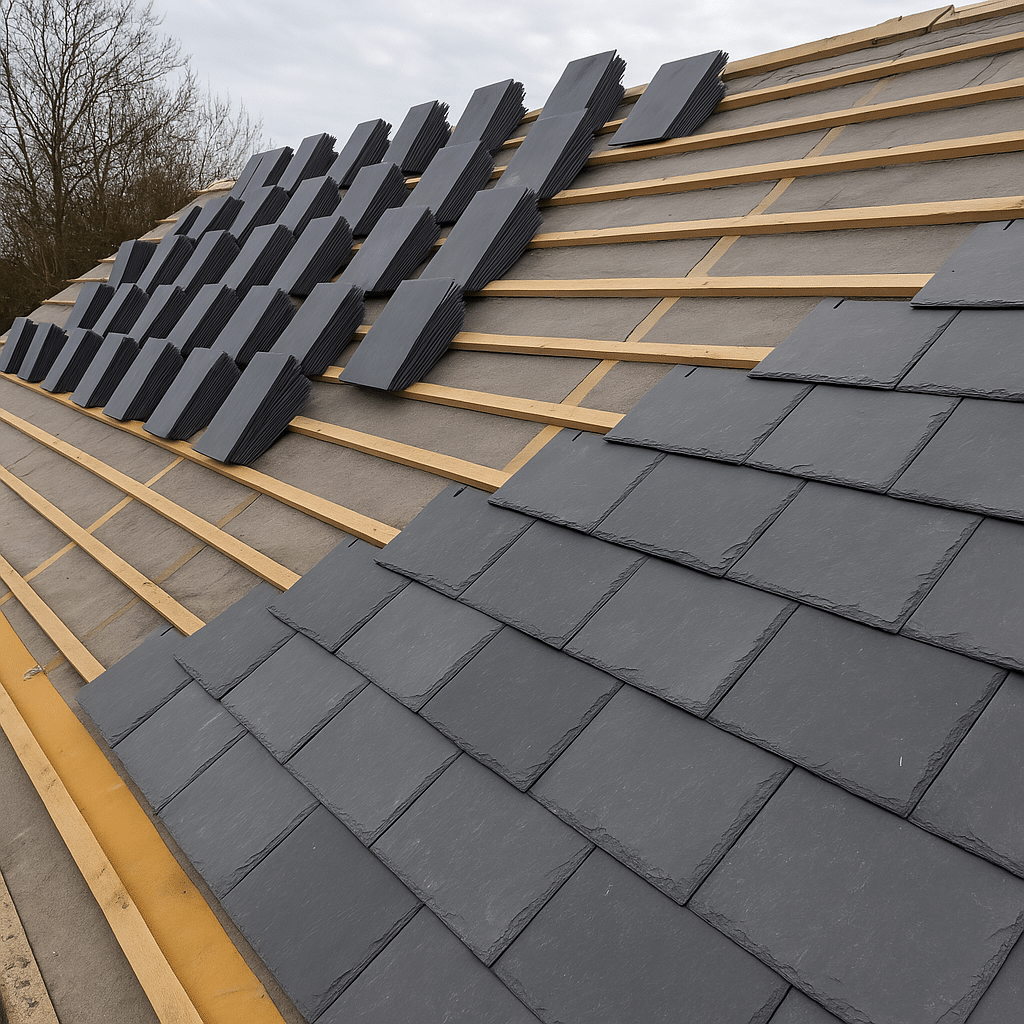Tile roofs provide homes with a robust, long-lasting roofing solution that complements both classical and contemporary architectural styles. While most people think of dusty red terracotta tiles when they think of tile roofing, roofing tiles can be made from a variety of materials, including cement and slate rock.
Slate tiles have been a premium roofing material for hundreds of years thanks to their desirable grayish-blue hue and incredible longevity. However, these positive qualities come at a significant cost: The dense, heavy material is challenging to work with and puts a considerable strain on budgets (and housing frames).
While slate’s beauty and durability may tempt you, you must weigh its costs to determine whether it is suitable for your home. Choosing the right material for your roof replacement is an important and challenging task, and it’s best to fully understand each material’s strengths and weaknesses and how they may affect your needs and budget.
Slate Roof Pros
There’s a good reason slate is considered a premium roofing option. The material is robust, has a longer useful lifespan than most human beings, and is widely desired for its aesthetic appeal.
Weatherproofing And Durability
Slate’s weight and density make it resistant to almost any weather condition. Stinging rain and hurricane-force winds are likely to bounce off your roof without damaging even a single tile, making it ideal for homes that experience frequent extreme weather events.
Slate is also naturally resistant to less extreme but more consistent weather conditions that hasten the degradation of other roofing materials. It will not discolor or warp from sun exposure and is immune to the corrosive effects of salt air near coastlines.
While most modern roofing materials provide at least some protection against fire, slate is considered to be a natural class-A fireproof material. This will protect your home in the event of a fire caused by extreme weather or spreading from a nearby structure fire.
Life Expectancy
Nothing says timeless quite like a roof made of stone, which makes it no surprise that slate boasts the longest lifespan of any roofing material. The baseline life expectancy of a slate roof is 50 years, and that’s without any effort put into maintenance or upkeep.
Properly maintained, a slate roof can last well beyond a century, with some estimates putting its useful lifespan upwards of 200 years. That means multiple generations of your family can, quite literally, live under a single roof!
Aesthetics
Like terracotta tiles, slate roofs have a timeless quality that can be incorporated into classical and contemporary architectural styles. Modern designs often utilize slate as cladding for facades to provide a juxtaposition between natural and artificial building materials.
Because they are naturally occurring, each slate tile will have its own individual color grading and pattern. Depending on the quarry the slate was extracted from, it can come in a variety of hues, including purple, green, grey, and grey-blue. These colors can help match the roof with a home’s existing color scheme or provide the base for a new one.
Slate Roof Cons
Many of the same properties that make slate such a desirable roofing material also make it extremely difficult to work with. This can make installing and maintaining the roof an expensive and time-consuming endeavor.
Cost
The most apparent weakness of slate roofing is its high cost. It is one of the most expensive roofing options available, costing anywhere from $10 to $30 per square foot. Material prices alone may double the price of a roof replacement over common low-cost alternatives like shingles.
Unlike its manufactured alternatives, slate is a naturally occurring material primarily quarried outside the United States. This means it’s subject to shortages and supply chain issues. As a result, the cost of slate tiles can vary significantly year over year depending on conditions that impact production and trade.
Brittleness
While slate is highly resistant to weather and elemental damage, it is highly susceptible to damage from physical impacts. Stones, tree branches, and other physical objects impacting the roof are liable to crack the tiles, though this can create a unique aesthetic on its own.

The stone’s brittleness makes it vulnerable to foot traffic, severely limiting roof access for the home. This contributes to the general difficulty of working with and maintaining slate roofs, adding to the already steep monetary costs over time.
Difficulty Of Installation And Maintenance
While its weight and density contribute to the roof’s durability and longevity, they also make it very difficult to work with and install. Slate roof installations require highly specialized labor, leading to longer project timelines and ballooning labor costs.
The difficulties don’t end with the installation. Maintaining and repairing the roof will require specialized tools and knowledge to avoid damaging the tiles from foot traffic. Specialists may also be needed for unrelated home projects that nonetheless require roof access.
Weight
Another potential hurdle that prevents many homeowners from choosing slate is its weight and the strain it puts on a home’s structure. Homes initially built without roofing tiles are often incapable of handling the extra weight if the homeowner chooses to switch to tile later. This means that the roof will need to be reinforced before the tiles can be installed, once again adding to the cost and time it will take to replace the roof.
Slate is a premium roofing material option, which needs to be considered when determining whether it works for your home and budget. If you are considering a roof replacement and need to consult a roofing professional, A&E Brothers Roofing is the company to call. With over 50 years of industry experience, our professionals can help you with roofing, material selection, and installation. Get in touch with us to learn more about our roofing services and receive a free quote.


